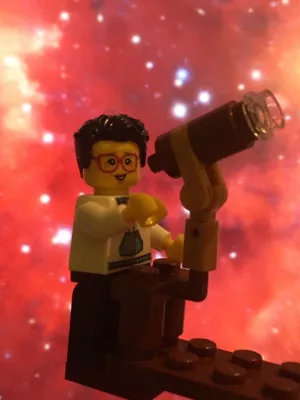
Jens Hoeijmakers
ASSOCIATE SENIOR LECTURER

Three planets transiting the evolved star EPIC 249893012 : A hot 8.8-M super-Earth and two warm 14.7 and 10.2-M sub-Neptunes
Author
Summary, in English
We report the discovery of a new planetary system with three transiting planets, one super-Earth and two sub-Neptunes, that orbit EPIC 249893012, a G8 IV-V evolved star (M = 1.05 ± 0.05 M, R = 1.71 ± 0.04 R, Teff = 5430 ± 85 K). The star is just leaving the main sequence. We combined K2 photometry with IRCS adaptive-optics imaging and HARPS, HARPS-N, and CARMENES high-precision radial velocity measurements to confirm the planetary system, determine the stellar parameters, and measure radii, masses, and densities of the three planets. With an orbital period of 3.5949-0.0007+0.0007 days, a mass of 8.75-1.08+1.09 M, and a radius of 1.95-0.08+0.09 R, the inner planet b is compatible with nickel-iron core and a silicate mantle (ρb = 6.39-1.04+1.19 g cm-3). Planets c and d with orbital periods of 15.624-0.001+0.001 and 35.747-0.005+0.005 days, respectively, have masses and radii of 14.67-1.89+1,84 M and 3.67-0.14+0.17 R and 10.18-2.42+2.46 M and 3.94-0.12+0.13 R, respectively, yielding a mean density of 1.62-0.29+0.30 and 0.91-0.23+0.25 g cm-3, respectively. The radius of planet b lies in the transition region between rocky and gaseous planets, but its density is consistent with a rocky composition. Its semimajor axis and the corresponding photoevaporation levels to which the planet has been exposed might explain its measured density today. In contrast, the densities and semimajor axes of planets c and d suggest a very thick atmosphere. The singularity of this system, which orbits a slightly evolved star that is just leaving the main sequence, makes it a good candidate for a deeper study from a dynamical point of view.
Publishing year
2020-04-01
Language
English
Publication/Series
Astronomy and Astrophysics
Volume
636
Document type
Journal article
Publisher
EDP Sciences
Keywords
- Planetary systems
- Planets and satellites: detection
- Planets and satellites: fundamental parameters
- Techniques: photometric
- Techniques: radial velocities
Status
Published
ISBN/ISSN/Other
- ISSN: 0004-6361

